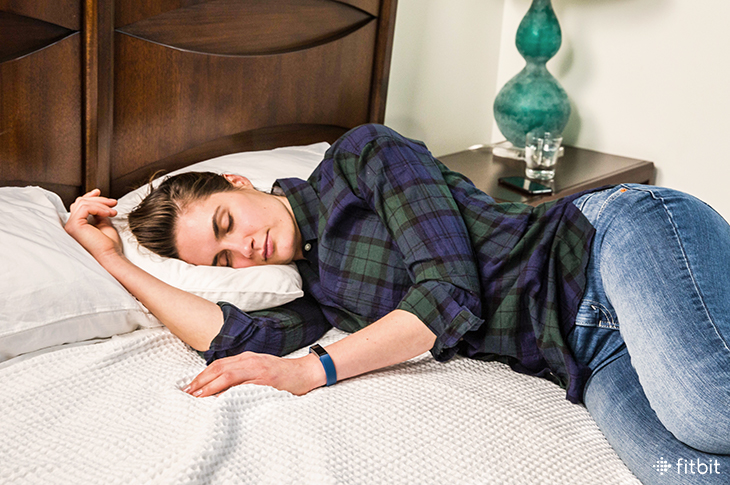
There’s usually a time in the middle of the afternoon, after you’ve noshed your lunch and gotten much of the day’s work under your belt, where you start to hit an energy wall. Sound familiar? Well, if you break away for 20 minutes or so, a nap might be just the fuel you need to power through until bedtime.
To be clear, there are two kinds of naps, says Michael Grandner, PhD, a Fitbit sleep advisor and director of the Sleep and Health Research Program in the Department of Psychiatry at the University of Arizona College of Medicine, Tucson.
If you need a nap because you literally “cannot stay awake,” you’re not getting enough sleep at night. “But then there are naps that you take by choice,” says Grandner. “For instance, you decide to take a power nap in the middle of the day. These naps can actually be beneficial. A brief nap in the early afternoon can reduce fatigue, improve brain function, and even improve physical performance.” That means you could get more (higher-quality) work done in the latter half of the day after a quick break for sleep, and feel re-energized for a workout in the evening.
Sounds great, right? It is. But Grandner says you need to follow a few guidelines to get enough of a boost during your nap and avoid disrupting your nighttime sleep patterns.
How Long Should a Good Nap Be?
The best part of napping? They don’t need to be long. “A nap of 20 minutes should be enough,” says Grandner. “Naps over 45 to 60 minutes run the risk of being too long, leaving you more tired than when you started. So you should try to keep your naps between 20 and 45 minutes long.” If you wake up in a fog instead of revived, you’re napping too long.
When Should You Nap?
The toughest part of napping is the timing — especially for working men and women who might not have much of a break during the day. “The later you nap, the more likely you will wake up groggy,” Grandner says. “Sleep during a nap is different than sleep at night, which is why you don’t need much to feel refreshed, but if you nap too close to nighttime, you might slip into one of those ‘stages’ of sleep and you’ll wake up feeling pretty terrible. The best time to nap is as close to the middle of the day as possible.” If you’re going to nap in the late afternoon, Grandner says try not to wake up after sundown as a rule of thumb.
How Do You Create the Ideal Environment for a Nap?
It’s a misconception that you need to be in a cool, dark, quiet room for a nap, like you might need to be for nighttime sleep. “You don’t even need to nap in bed,” Grandner says. “There is no ideal environment—literally, whatever works for you. You may actually want to nap out of bed, so that it will be easier to wake up and get going afterwards.” So… stop, drop and nap! Anytime, anywhere.
The final caveat Grandner wants to emphasize about napping is that, while those midday Z’s can sometimes replace lost sleep, naps will never be as restful as quality nighttime rest. “Also, if you are having insomnia symptoms, you should avoid naps altogether,” he says. “Naps can make it more difficult to fall asleep at night.” Otherwise, go ahead and lay your head down during that 20-minute break. If you follow these guidelines, napping can be a great energy- and productivity-booster for the remainder of your day.
Bonus: You can manually log your 20- to 45-minute nap in your Fitbit app, to help you keep track of your overall sleep habits.
This information is for educational purposes only and is not intended as a substitute for medical diagnosis or treatment. You should not use this information to diagnose or treat a health problem or condition. Always check with your doctor before changing your diet, altering your sleep habits, taking supplements, or starting a new fitness routine.

I have to get up at three am I nap like 2-3 hrs in the afternoon is that too long
I started using FITBIT for my sleep analysis, its amazing..REM,LIGHT & DEEP sleep cycle. Now sleep fascinates me. Being close to nature I believe
in sleep cycle. Have read in some journals about soul detachment during deep sleep cycle. Is this true?